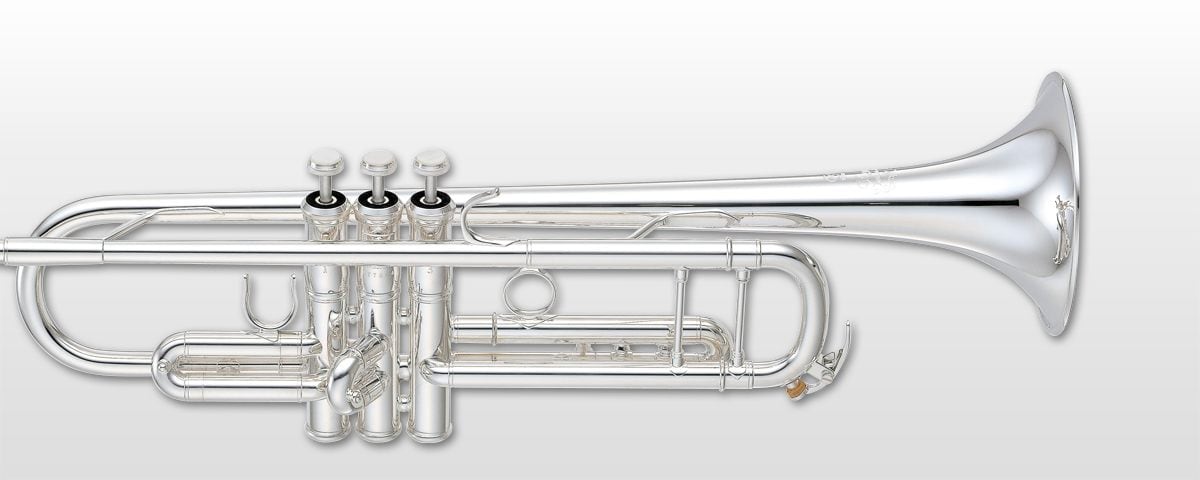YTR-9335NYS Descontinuado
O artista por detrás da obra

David Bilger
Hailed by the New York Times for his playing of “easy brilliance” and by the Washington Post for his “engaging legato touch,” David Bilger has held the position of principal trumpet of The Philadelphia Orchestra since 1995. Prior to joining the Orchestra, he held the same position with the Dallas Symphony.
As a soloist, Mr. Bilger has appeared with The Philadelphia Orchestra, the Dallas Symphony, the Houston Symphony, the Chamber Orchestra of Philadelphia, the Oakland Symphony, the Indianapolis Chamber Orchestra, Philharmonia Virtuosi of New York, and others. His solo appearances with The Philadelphia Orchestra include 2013 performances of Hummel’s Trumpet Concerto, a 2008 US Premiere of Herbert Willi’s “Eirene” for trumpet and orchestra as well as performances of the Tomasi Trumpet Concerto at Carnegie Hall, and on tour in North and South America in 1998; Haydn’s Trumpet Concerto in February 2003; Copland’s Quiet City in October 2004; and Bloch’s Proclamation in 2006. Mr. Bilger has performed recitals in New York, Washington, D.C., Cleveland, Los Angeles, Philadelphia, and other major American cities.
Mr. Bilger has appeared with the Chamber Music Society of Lincoln Center, with which he recorded Bach’s Second Brandenburg Concerto. Other chamber music appearances include Chamber Music Northwest, the New York Trumpet Ensemble, Saint Luke’s Chamber Ensemble, as well as guest appearances with the Canadian Brass and the Empire Brass. He released a recording of new electro-acoustic music for trumpet and synthesizers with composer Meg Bowles.
Mr. Bilger is currently on the music faculties The Curtis Institute of Music and Temple University, and was a former faculty member of the Hugh Hodgson School of Music at the University of Georgia. He has performed master classes at dozens of institutions, including the Juilliard School of Music, Indiana University, the University of Michigan, the Manhattan School of Music, and the Peabody Conservatory. He has also taught at the Pacific Music Festival and the National Orchestral Institute most recently at the Aspen Music Festival and School.
Mr. Bilger holds a Master of Music degree from the Juilliard School of Music and a Bachelor of Music degree from the University of Illinois.
Design da campânula

The area where the bell meets the valves has been redesigned for optimum playing resistance and brilliant, distinctive tone. High note playability has been significantly improves as well.
The bell has a bottom seam that results in ideal balance with the new thinner valve casing and pistons.
Tubo principal

Com a utilização de um tubo principal (leadpipe) mais grosso que os comuns, segundo o estilo original Malone Pipe™ (MB1), e uma ligação ao bocal menos profunda, foi possível aperfeiçoar o timbre e a capacidade de resposta para obter uma melhor resistência ao ar, para o músico. O facto de o apoio para dedos não ser soldado ao tubo principal também influencia positivamente a qualidade sonora e capacidade de resposta. Malone Pipe™ Com base nos modelos de tubos principais desenhados pelo famoso artesão de instrumentos de metal Bob Malone, o modelo Malone Pipe™ encontra-se disponível em várias afinações. Oferece uma resposta rápida, afinação precisa e uniformidade de timbre sem par. Bob Malone, que originalmente era trompetista, abriu o seu atelier de instrumentos de metal em Los Angeles, em 1983. Os trompetistas dirigiam-se ao seu atelier para personalizar os seus instrumentos. O seu design original do tubo principal recebeu elogios a vários níveis e é ainda muito valorizado pelos trompetistas. Desde que Malone integrou a equipa de Investigação e Desenvolvimento da Yamaha, em 2001, que o seu design Malone Pipe™ se encontra presente num grande número de modelos da série “Xeno Artists” e da série “Custom”. Trazendo maior riqueza e brilho ao timbre, para além de uma excelente proteção, o design Malone Pipe™ permite uma enorme expressividade musical.
Valve casing, Piston

Thinner valvecasing and pistons, as well as the modified angle of the branch tube (Knuckle, marked blue in the photo), result in improved response and provide the performer with an ideal appropriate resistance.Modifications to the shapes of the piston button, top cap, and bottom cap, as well as production refinements, have made it possible to deliver a deeper tone while improving projection.
Main tuning slide and brace

A conventional square crook is used (the Chicago model has a semi-square crook), while the main tuning brace has been extended and made heavier to achieve blowing resistance and vivid tonality that add up to brilliant presence in orchestral settings.
Chave de escape de água

The weight distribution of the water key arm and bridle has been revised for more playing versatility and easier access to the high notes.
Brace barance and position

The shape and position of the bell braces has been modified to achieve better weight balance that results in speedier response and livelier tone with a solid tonal core.
Cabeça da válvula

A cabeça da válvula foi concebida para evitar que o pistão do trompete se solte e caia. É feita em silicone porque este material não danifica o acabamento. É, assim, resistente e elástica, permanecendo colada ao instrumento enquanto toca (comprimento: 12 cm).
Case

The TRC-800E double case features a backpack-style design for ease of transport.





